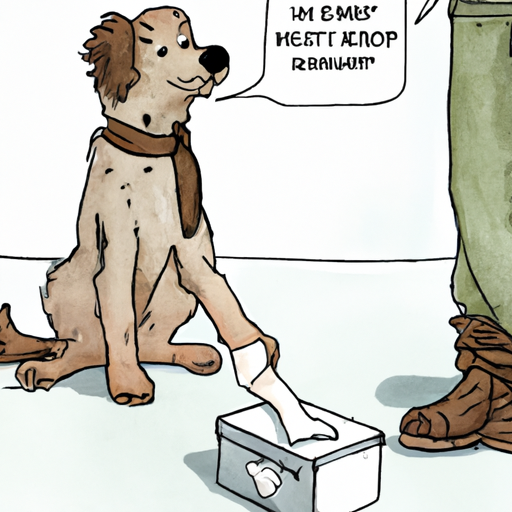“`markdown
How to Wrap a Dog’s Paw
Introduction
You love your furry friend, and seeing them in pain can be heart-wrenching. If an unfortunate incident has occurred and your dog’s paw is injured, it’s crucial to know how to wrap it properly. This guide will walk you through the process step-by-step, ensuring you feel confident and prepared to care for your dog in a time of need.
Materials You’ll Need
Before you get started, gather the necessary items:
- Clean cloth or bandages
- Adhesive tape
- Scissors
- Non-stick gauze pads
- Veterinary wrap
Proper preparation is key to ensuring the wrapping process is as smooth and stress-free as possible for both you and your dog.
Step-by-Step Guide to Wrapping Your Dog’s Paw
Understanding the steps involved in wrapping your dog’s paw can help alleviate your anxiety and ensure your dog gets the care they need. Here’s the breakdown:
-
Clean the Wound: Gently clean the wound with warm water and a mild antiseptic.
-
Apply Non-Stick Gauze: Place a non-stick gauze pad over the wound.
-
Wrap with Bandage: Start wrapping the bandage from the bottom of the paw, moving upward to the leg.
-
Secure with Tape: Secure the bandage with adhesive tape, but be sure not to wrap it too tight.
-
Apply Veterinary Wrap: Over the bandage, apply the veterinary wrap. Again, ensure it’s secure but not overly tight.
Tips for Effective Paw Wrapping
Here are some tips to ensure the paw wrap is effective and comfortable for your dog:
- Always check for signs of swelling or discomfort from your dog. If they seem in distress, the wrap may be too tight.
- Change the bandage regularly to prevent infection.
- If the wound seems to worsen or not improve, consult with your vet immediately.
Recognizing When to Seek Professional Help
While wrapping your dog’s paw at home can help manage minor injuries, it’s essential to know when to seek professional help. If your dog exhibits any of these signs, contact your vet immediately:
| Signs | Description |
|---|---|
| Increased Agitation | Your dog seems more agitated or uncomfortable |
| Wound Escalation | The wound appears to be getting worse |
| Fever | Your dog has a high temperature |
| Loss of Appetite | Your dog is not eating or drinking |
Frequently Asked Questions
Q: How often should I change the bandage?
A: Ideally, the bandage should be changed every day.
Q: Can I use human bandages?
A: Veterinary bandages are the best choice as they are designed for animal fur and skin.
Q: How tight should the wrap be?
A: The wrap should be secure but not overly tight. If your dog shows signs of discomfort, it may be too tight.
Q: What if my dog keeps trying to remove the bandage?
A: Consider using a protective boot or cone to prevent your dog from disturbing the bandage.
Remember, your dog depends on you for their well-being. Knowing how to properly wrap a paw is just one way to ensure you’re providing the best care possible.
“`



